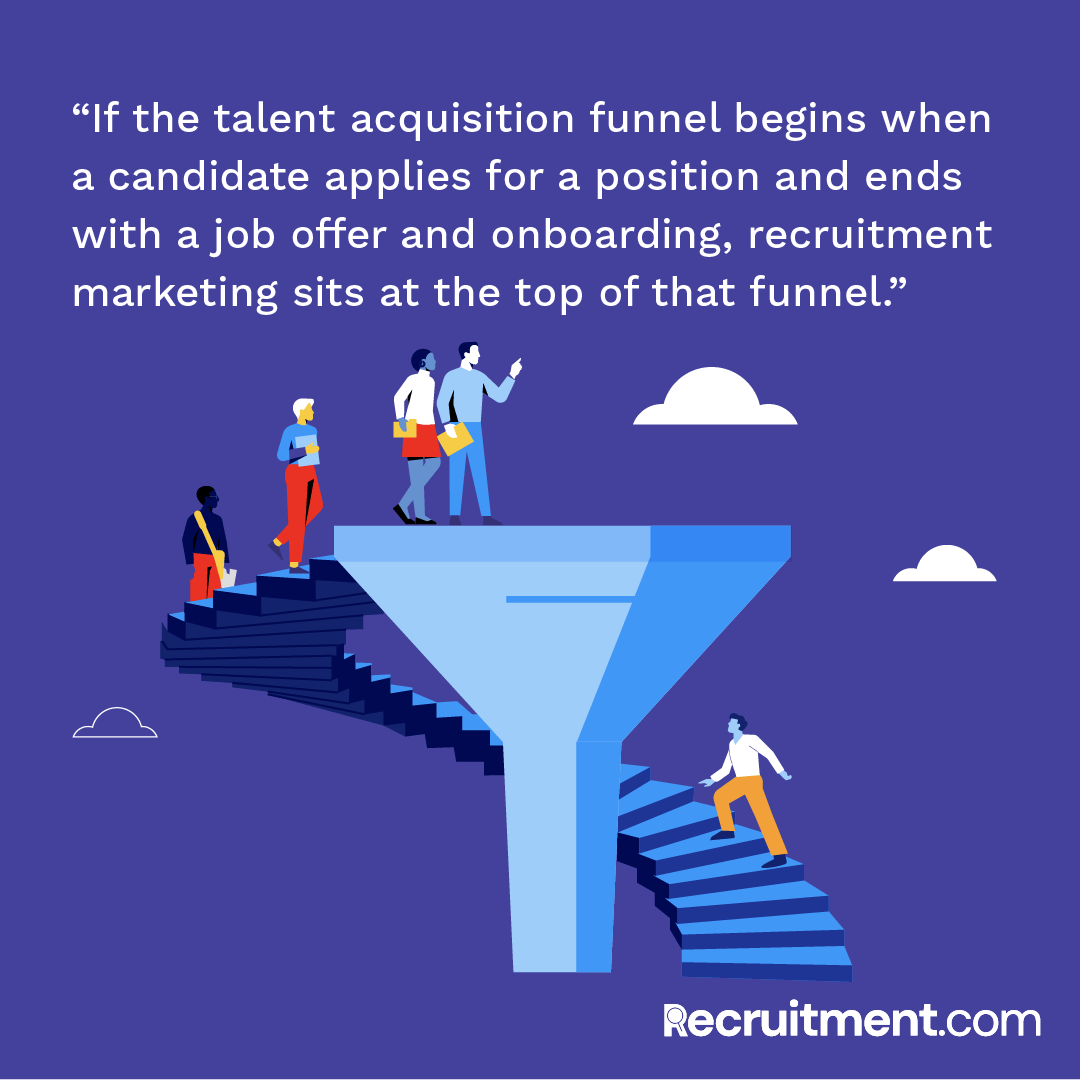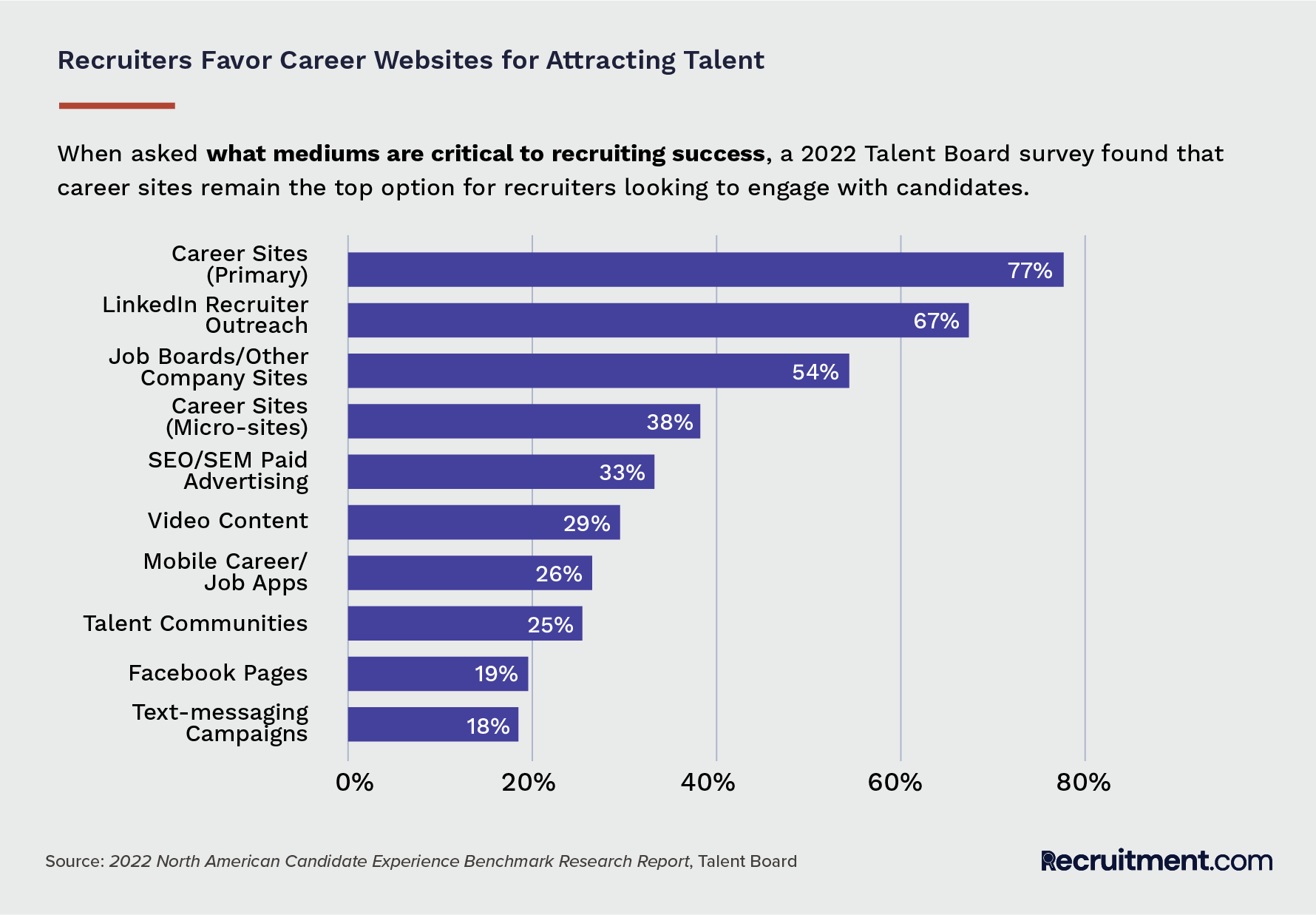Building a High-impact Recruitment Marketing Strategy: 5 Lessons for Success

Noa Ferber is the Global Talent Attraction Manager at PayPal and holds a master’s degree in occupational psychology from the University of Haifa. She has more than 20 years of recruiting experience across diverse industries from tech to healthcare, with expertise in strategic sourcing, employer branding, and recruitment marketing.
Noa Ferber, Global Talent Attraction Manager at PayPal, shares her journey to recruitment marketing—and five key insights she learned along the way.
I have a “How to Build a Recruitment Marketing Program” presentation deck that I’ve used since being promoted to Global Talent Attraction Manager at PayPal three years ago. On the second slide, I explain my recruitment marketing team’s mission: “We aspire to set PayPal as a globally recognized employer of choice, ensuring the best talent is engaged with our brand, including current and future opportunities.”
I consider recruitment marketing the secret sauce that adds flavor to our recruitment team’s efforts. It enhances the employer brand and candidate experience while ensuring we drive traffic to our career site and ATS.
At its essence, recruitment marketing is a strategic approach to attracting and engaging potential candidates. In practice, recruitment marketing is similar to any other digital marketing activity (like ads placed on your social feed inviting you to try a new product or service), and my team is responsible for designing and managing these recruitment campaigns. We want to encourage our target audience to view our social media feeds and visit our careers website.
Think of it like this: If the talent acquisition funnel begins when a candidate applies for a position and ends with a job offer and onboarding, recruitment marketing sits on top of that funnel. A candidate’s journey does not start when they apply. It starts way before that—as early as when they become aware of an employer or a specific opportunity and develop an interest in the company. Only then do they take the first step in the application process—and only then are the recruitment marketing efforts deemed successful.
From the Israeli National Health Services to PayPal, I gained much of my initial recruitment marketing knowledge on the job, without even calling it recruitment marketing (the new domain has only really emerged in the past 10 years). Based on my experiences, I’d like to share five important lessons I’ve learned in developing a recruitment marketing strategy that nets results, regardless of whether you’re a global giant or a small or midsize business.

Lesson 1: Start Small
I started my recruitment career in Israel 20 years ago, where I did in-house talent acquisition for various private companies. In my last role in Israel, I was the Head of Recruitment and Assessment for the Israeli National Health Services; I built the career site blog, started academic partnerships for university recruiting, and developed our employer brand. Nowadays, these promotional activities fall under recruitment marketing.
When I moved to the UK, where I am currently based, I took a regional recruitment role for Amdocs, a prominent IT company that provides services to telecom companies globally. Six years later, PayPal approached me about a TA manager role overseeing Europe.
I built the Talent Attraction and Insights Team, which has since become our Global Talent Attraction Team, focusing on recruitment marketing. With PayPal’s support, my team and I have all become Certified Digital Marketing Professionals via courses offered by the Digital Marketing Institute, and I have earned an additional strategy and planning certification from DMI.
You can pick up many recruitment marketing skills along your career journey, but you may have to go out of your way to find them. There is a misconception that recruiters should automatically be able to do this type of work on top of their day-to-day jobs without additional training. But if you want to create a recruitment marketing strategy and evolve it over time, you need to learn specialized skills like social media and campaign management, media planning, and content creation.
You might think that only big companies can afford a recruitment marketing team, but it doesn’t need to be that way. There is usually a lot of low-hanging fruit that even one person can do, such as creating a basic plan for social media posting. So don’t be afraid to start small and grow from there.
Lesson 2: Be Agile
I like to say, “Try, learn, move on,” and I’m a big proponent of pivoting. Not surprisingly, there is a vast difference between where my team started and where it is today. We have implemented processes that have made us more effective, including measurements to check our campaigns’ progress and success. I am also proud that we have built a library of assets that any of our global recruiters can use, allowing them to adapt their own methods and processes.
However, getting to this point hasn’t been without challenges and learning opportunities. Initially, we had ambitious plans to produce new content multiple times a week. We quickly understood that investing in quality content to repurpose on various platforms was better. For example, during International Women’s Month last year, we produced four videos spotlighting women in tech at PayPal and distributed them using a multichannel approach. The series received great social media engagement and was hailed as a success.
When adapting your processes or trying to understand the direction you want to take your recruitment marketing in, be sure to take a step back and consider whether your aims benefit both you and your target audience. It is easy to get lost in ambitious plans, and the recruiting landscape will continue to change while you attempt to reach those goals. It’s important to stay attuned and flexible.

Lesson 3: Know Your Talent Personas
My education is in psychology, and I come from the assessment side of recruiting, which looks primarily at candidates’ skills, motivations, and interests. So I enjoy interviewing and getting to know the person behind the CV—understanding what drives them, what makes them happy, and what they’re looking for in their next career opportunity.
Today, I view this process through a marketing lens and in terms of understanding different personas. What key motivators will make somebody engage with us as a potential employer? Is it the fact that we provide professional growth? Is the person looking for a company that invests in community contributions? What will make them click on this ad and start their journey with PayPal?
In light of this approach, one of my team’s top priorities relating to online engagement has been redesigning and rebuilding PayPal’s career site. With the career site relaunch, we wanted to represent PayPal’s culture and values and tell the stories of our employees. A desirable company culture ranks exceptionally high on candidate wishlists; in 2022, an EY survey found that company culture factors into 92% of employee decisions when considering whether to remain with their current employer. Establishing an attractive employer brand is crucial, and authenticity is key as recruitment marketers seek to connect with their audience amid the hubbub of social media.
Understanding what makes your target audience tick is crucial to successful recruitment marketing. I have found that email marketing is one of the most effective tools when attracting candidates: using our talent communities to regularly engage with prospects and sharing news, stories, and new opportunities—activities which enable us to highlight our employer brand and nurture our relationship with prospective talent.
Lesson 4: Embrace Cross-team Collaboration
PayPal has a strong “one team” culture focused on collaboration. None of my team’s successes would be possible without working closely with our fellow recruitment, communication, branding, and business teams. Our weekly meetings with the external and internal communication teams are critical to ensure we are telling the same employer branding story.
Likewise, because one of our primary goals is to help the global recruitment team meet its targets for talent procurement, we recently provided support for the PayPal university program, which coincided with the opening of our 2024 internship application process.
As part of our recruitment marketing function, we also gather inspiring employee experiences to share. Personal stories about what it’s like to work at a company can be some of the most powerful content. For instance, we published a blog post on a program in Israel that supports women returning to work after maternity leave.
Many of these spotlight ideas come from other teams. Recruitment marketing doesn’t happen in a silo. Collaborate with other functions to better understand your company culture and achieve your goals.
Lesson 5: Stay Grounded
I’m a true believer in the power of data. My team has implemented reporting capabilities to ensure we develop sound strategies and present results to stakeholders according to what we've learned. To understand the ROI of our activities and increase engagement, we eventually need to say, “OK, we got 1,000 visitors to the career site from this campaign. From those, how many people applied or were hired?”
We seek input in weekly follow-up meetings with the different recruiting teams—from APAC to the Americas. If, for instance, we have received a high volume of traffic but a small number of leads, or we’ve gotten leads but they’re not meeting the quality we are looking for, what do we need to optimize and change about the campaign? How will we push our ads to create the most engagement and get qualified leads into the talent pipeline?

Tracking is essential because candidate behavior is multifaceted. According to data from Workable, 33.4% of the US workforce is actively looking for work, but a more significant percentage of 37.3% is “passively” looking—i.e., they are workers who are comfortably employed but are open to hearing about new opportunities. This passive talent may initially be more hesitant about signing up for open positions and will likely take longer to convert. By staying abreast of the latest recruitment data, you can keep track of user behavior over a more extended period and utilize techniques to convert hesitant visitors to your careers site. Any campaign’s success hinges on your ability to evaluate the necessary data.
Recruitment Marketing Recap: Achieving Success in a Competitive Hiring Landscape
By aligning recruitment marketing strategies with business hiring objectives and harnessing the power of digital marketing techniques, you can bolster your employer brand, expand your talent funnel, and achieve a higher ROI to secure the best talent in a fiercely competitive market. As you embark on your recruitment marketing path, remember this: It is a marathon, not a sprint—a journey of continuous learning and improvement.
Some of the skills in recruitment marketing will come naturally to recruiters, but that doesn’t mean it won’t require additional resources and skill development for you to flourish. Because recruitment marketing is a newer domain inside talent acquisition, it is a fantastic way for recruiters to explore and learn new practices as a potential career direction and area of expertise.

Noa Ferber is the Global Talent Attraction Manager at PayPal and holds a master’s degree in occupational psychology from the University of Haifa. She has more than 20 years of recruiting experience across diverse industries from tech to healthcare, with expertise in strategic sourcing, employer branding, and recruitment marketing.



